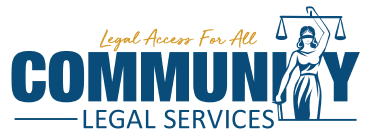Less than a year after graduating from law school, Jason K. Susalla found himself in disaster relief work accidentally, starting in 2010 with Bay Area Legal Services Inc. in Florida as a part-time attorney on a phone intake team.
Nearly 15 years later, with Hurricane Milton roaring through the Sunshine State, Susalla was at the center of the relief efforts, exchanging messages with emergency management and other officials to provide assistance to those in need.
Two sisters embrace their mother after arriving to her Lakewood Park, Florida, home, which was destroyed by a tornado spawned in the outer bands of Hurricane Milton on October 11, 2024. (Photo by Kathleen Flynn for the Washington Post)
“In addition to it being very rewarding to help folks who probably have seen better days, to say the least, I find it very exciting, because you’re on the front line,” said Susalla, now the full-time managing attorney of Bay Area Legal Services’ disaster relief team.
Susalla said he “always expected attorneys assisting in disaster relief would be stuck in their offices,” but “depending on how far you’re willing to engage the community in disaster response, our partners out there are very willing to have us along for the ride, and I find it quite exhilarating, honestly.”
Bay Area Legal Services and other legal aid organizations around the state are expecting an influx of clients needing help in the coming weeks and months after the state was walloped with Hurricane Debby in August, followed by Hurricane Helene in September and then Hurricane Milton.
Even for a region familiar with rough storms, the impacts from the most recent hurricanes have been monumental.
Hurricane Helene made landfall as a Category 4 storm with peak winds of 140 miles per hour in Perry, Florida, according to the Florida Climate Center. The storm unleashed catastrophic damage in the Southeast United States, causing more than 230 fatalities across six states and torrential rainfall, flooding and widespread power outages.
About a week and a half later, Hurricane Milton made landfall to the south, near Siesta Key, as a Category 3 hurricane with maximum sustained winds of 120 miles per hour, according to the National Weather Service. That storm triggered an outbreak of 15 tornadoes across South Florida, two of these reaching EF3 status.
Helping some of the most vulnerable Floridians through these disasters are legal aid workers passionate about assisting individuals through their recovery and ensuring they get a fair shake.
“Because we are community lawyers, and this is our community too, we are going to be involved in the immediate response by being at disaster recovery centers and family resource centers so that we can make sure that people are getting access to those immediate needs,” said Morgan Cardinal, director of advocacy at Community Legal Services of Mid-Florida Inc.
Cardinal said nothing beats an in-person approach when it comes to helping clients immediately following a storm. It’s important to have lawyers “on the ground” in the disaster recovery and family resource centers to talk to survivors about what sort of help the organization offers if any legal issues pop up.
“I’m biased because I work in legal aid, but the people who work in legal aid are truly miracle workers and we do a lot with a very, very little bit. Volunteer assistance, funding, resources, it’s always very limited in this space,” Cardinal said.
The legal aid groups are now preparing to help clients with a wide array of issues — including housing woes and domestic violence cases — some of which may not arise for weeks, months or even years after the storms have passed.
Often one of the biggest needs that legal aid organizations see immediately following a storm are landlord tenant issues, Susalla said. Then it evolves into Federal Emergency Management Agency work, such as helping folks who may have been initially rejected for financial assistance, and eventually contractor issues for work that wasn’t done or wasn’t done properly.
Community Legal Services saw all 12 of the counties it covers declared disaster areas. The organization makes it a point to respond to disasters as quickly as possible despite some of the staff suffering minor debris and water damage in their homes and having no power at their offices for days immediately following Hurricane Milton.
The organization has already seen one county have a batch of about 40 FEMA aid applications denied. While it may be quick fixes like a missing signature, Community Legal Services won’t know for sure until its attorneys can get to the clients and work with them, said Paul Ferreira, the organization’s managing attorney of the disaster legal services unit.
At Gulf Coast Legal Services, Sara M. Jones, deputy director for financial stability, said it’s important to ensure that clients have an even playing field following a disaster. Jones said she expects plenty of housing and eviction concerns for clients and family law matters like domestic violence cases can also pop up following a storm with residents under increased stress.
“What people don’t always understand is that if a person is not represented by an attorney, the chances of them being able to effectively represent themselves go down significantly. And so I take a lot of pride in the fact that I am able to make sure that those playing fields are more even,” Jones said.
Some hurricane legal aid clients need help months and even years beyond a storm. Jones said she just wrapped up helping an older couple with a roof replacement following Hurricane Ian damage in September 2022.
At the time, a roofing company quoted them a price but changed the price later. The couple contacted Jones’ office because they were feeling uncomfortable.
